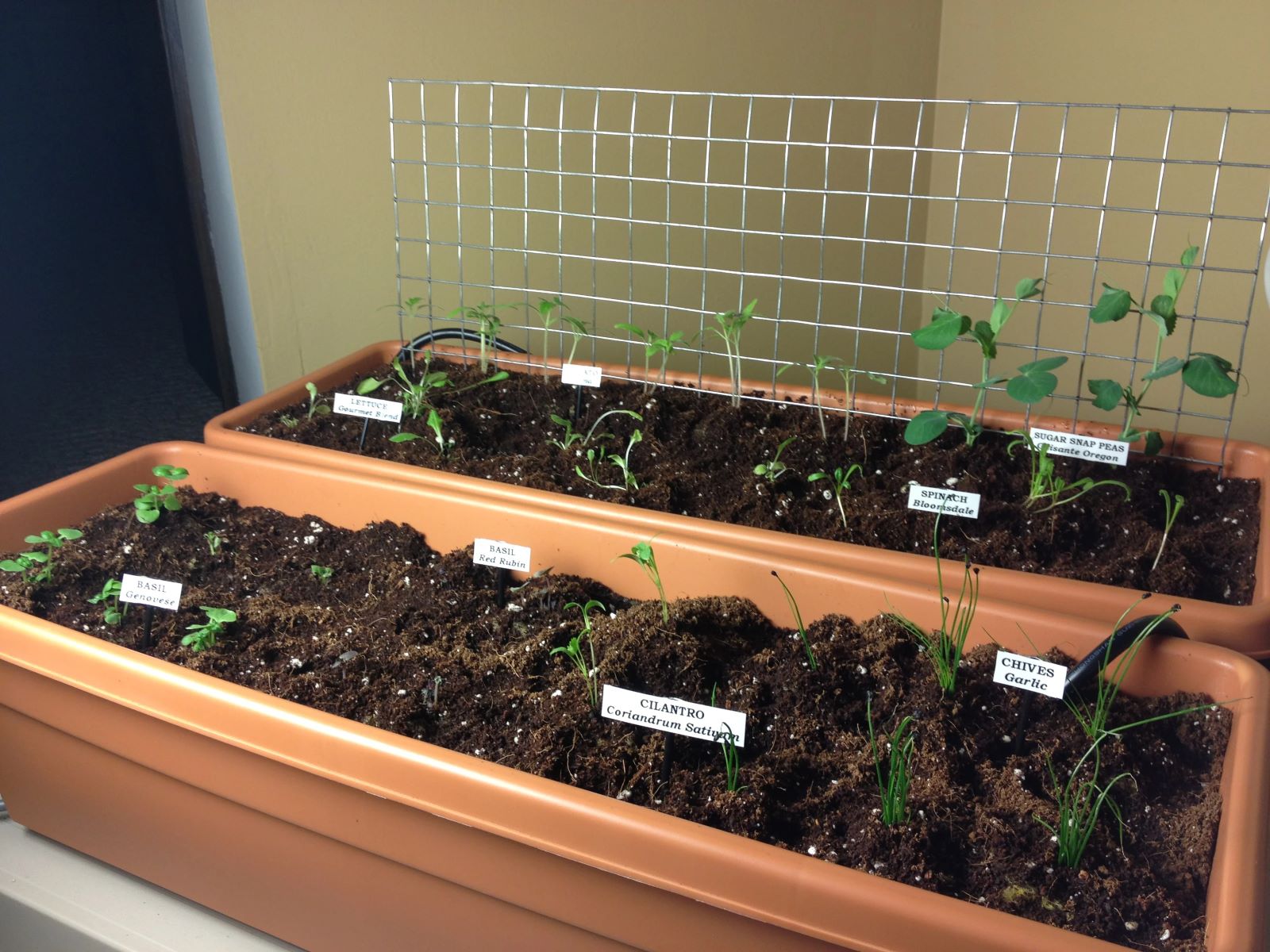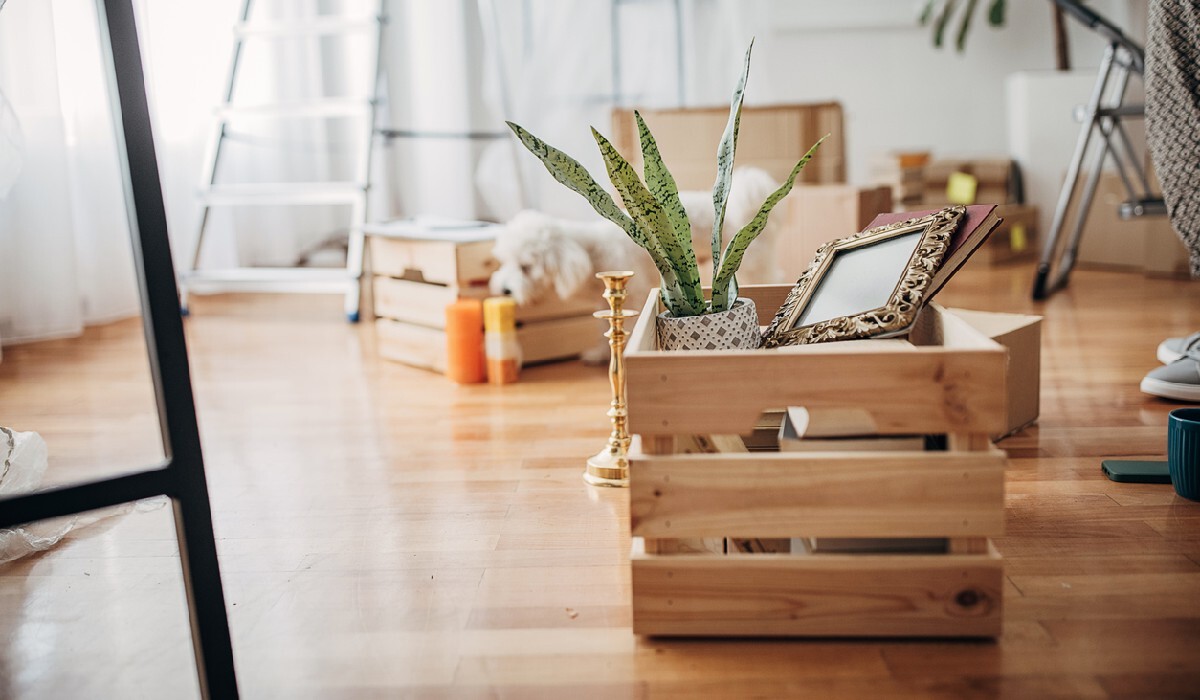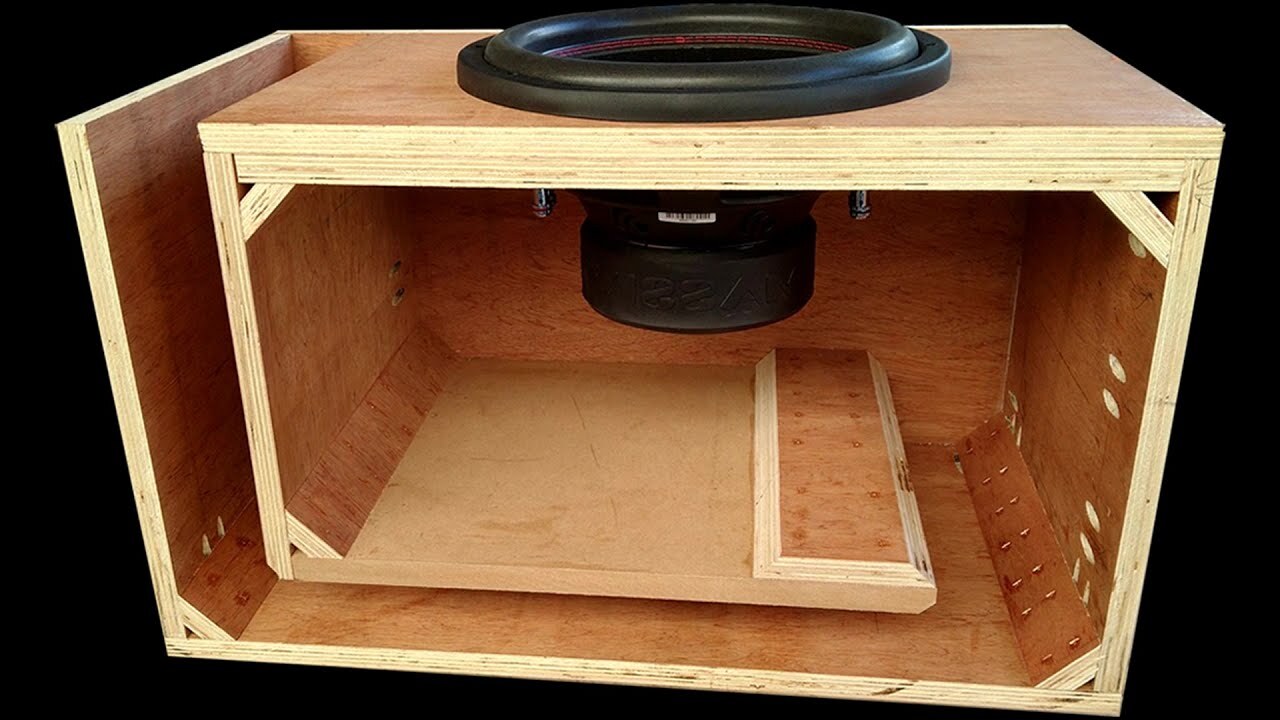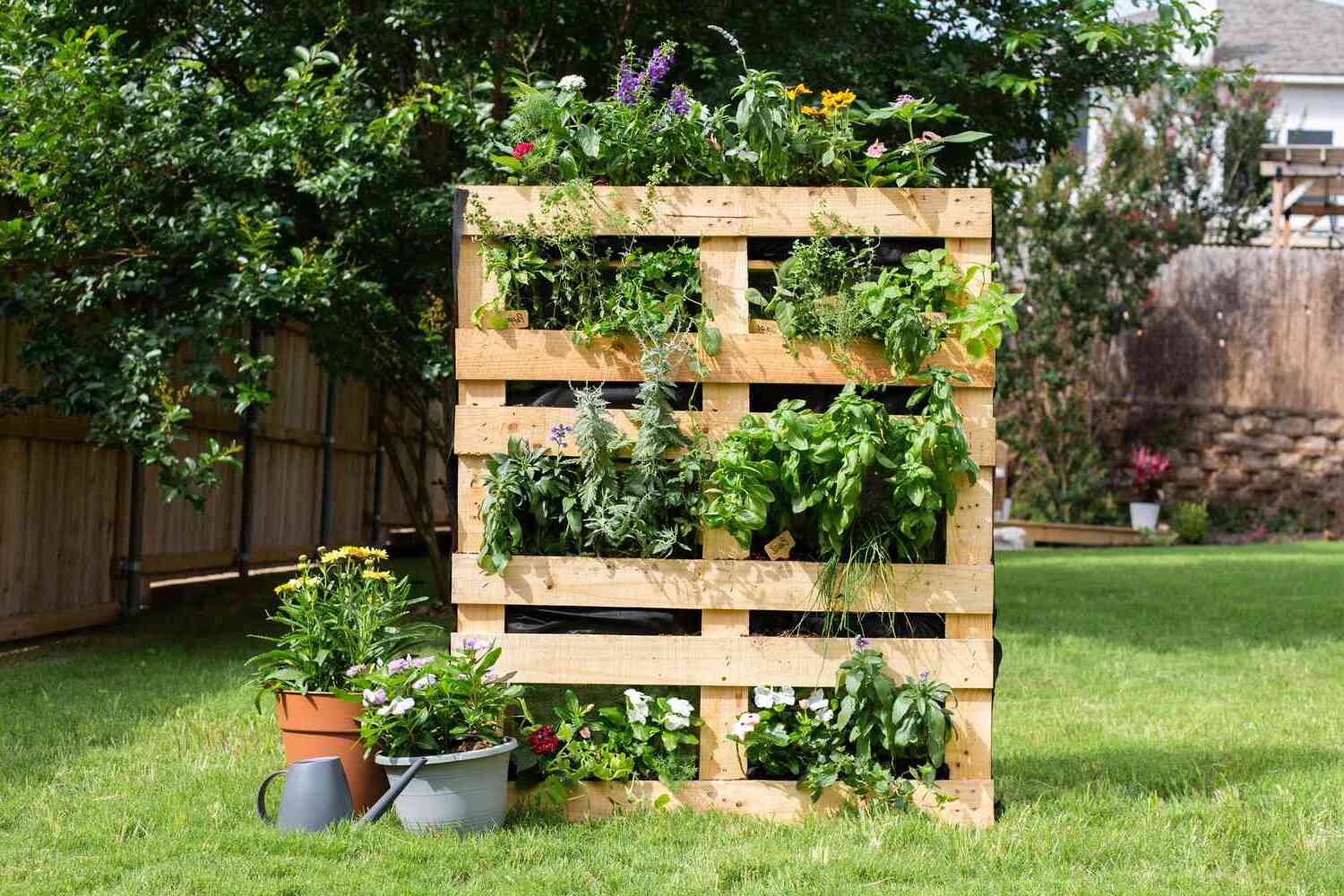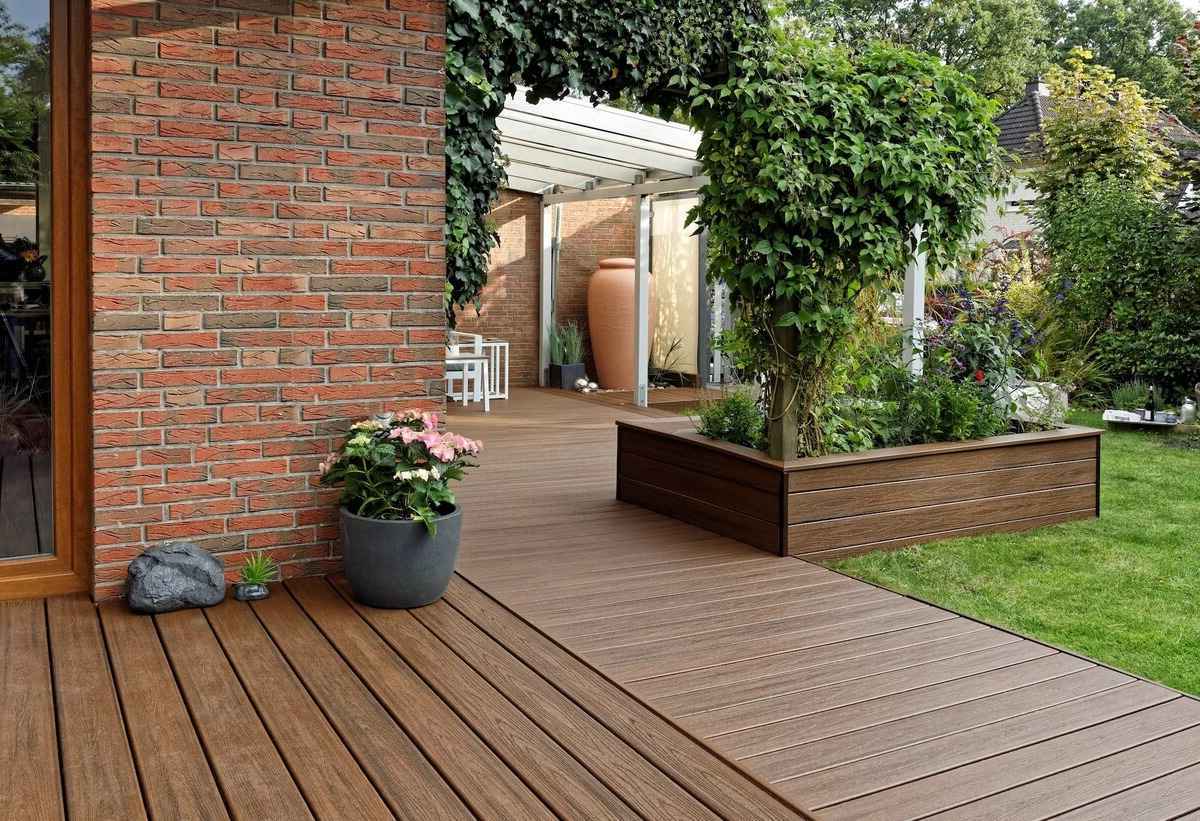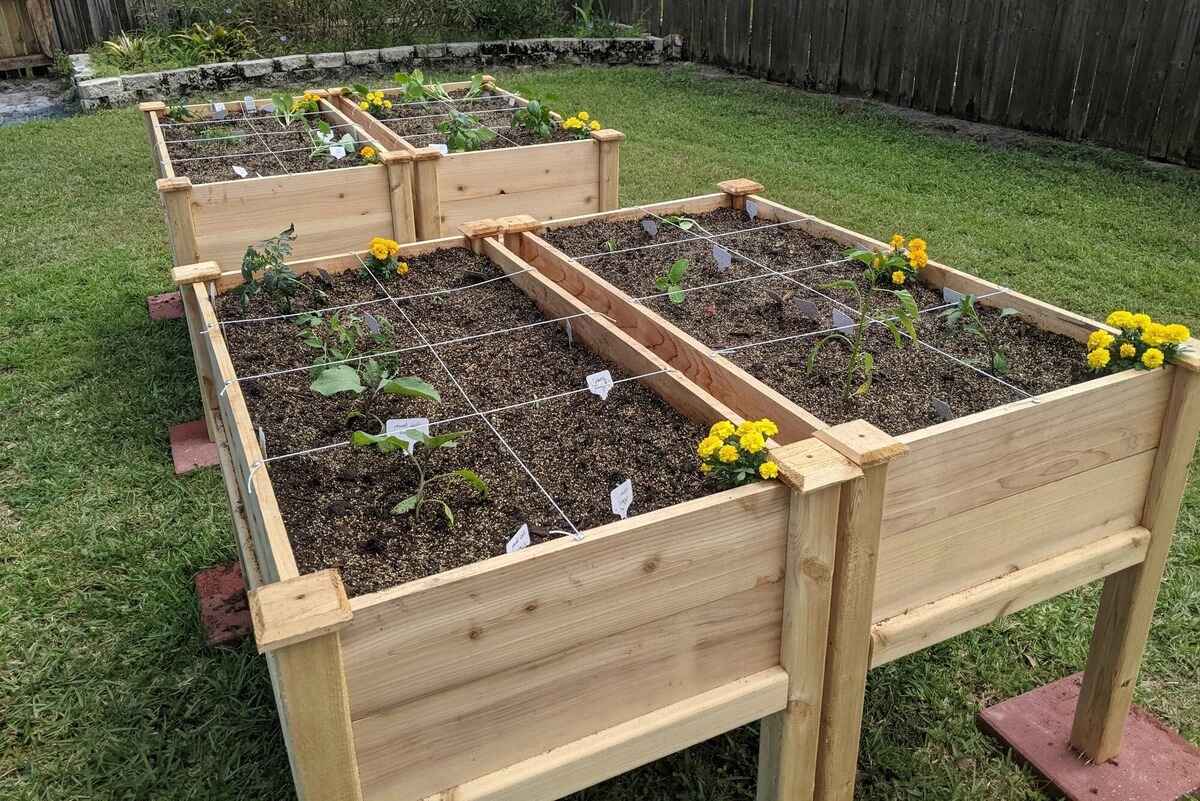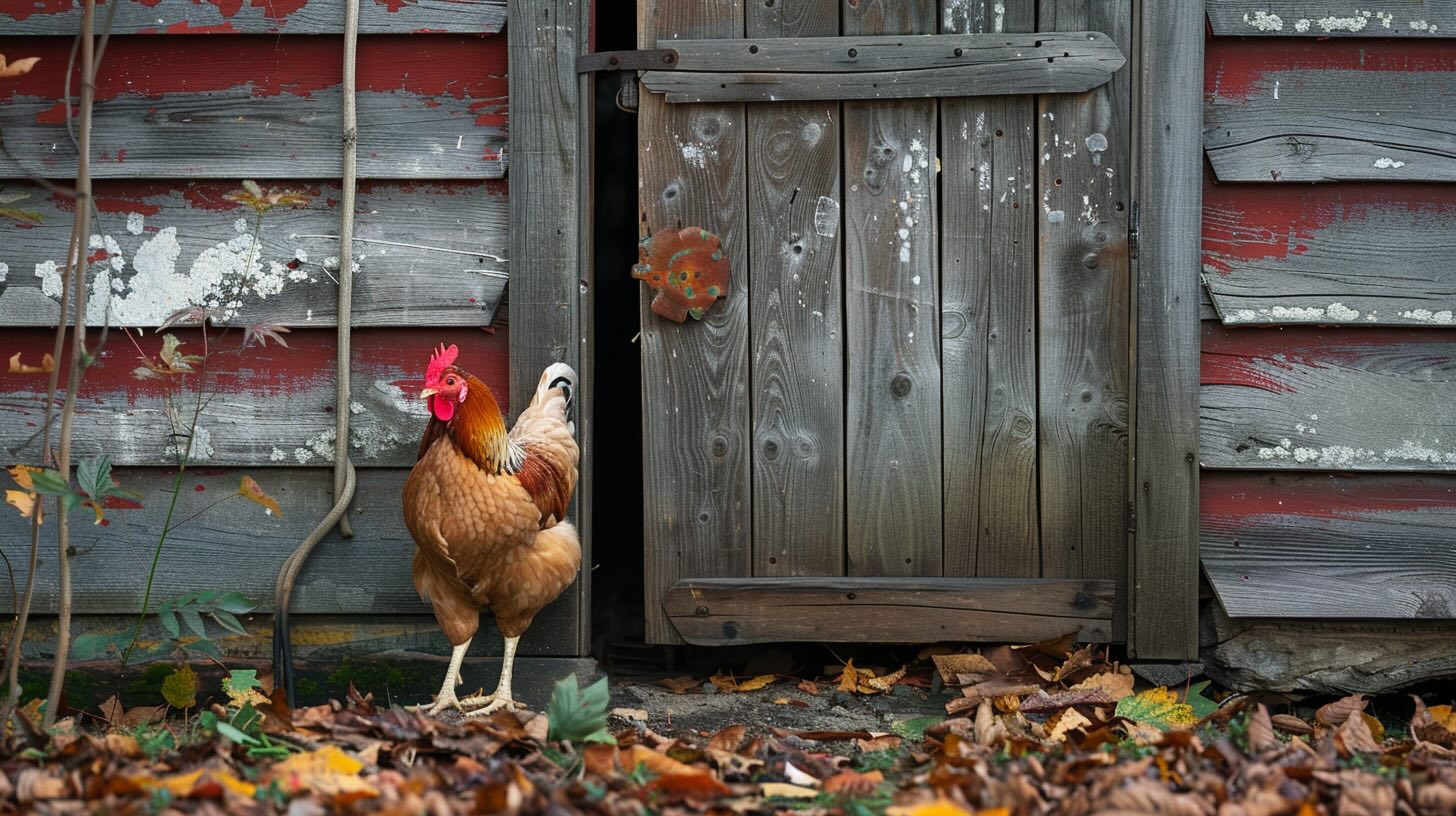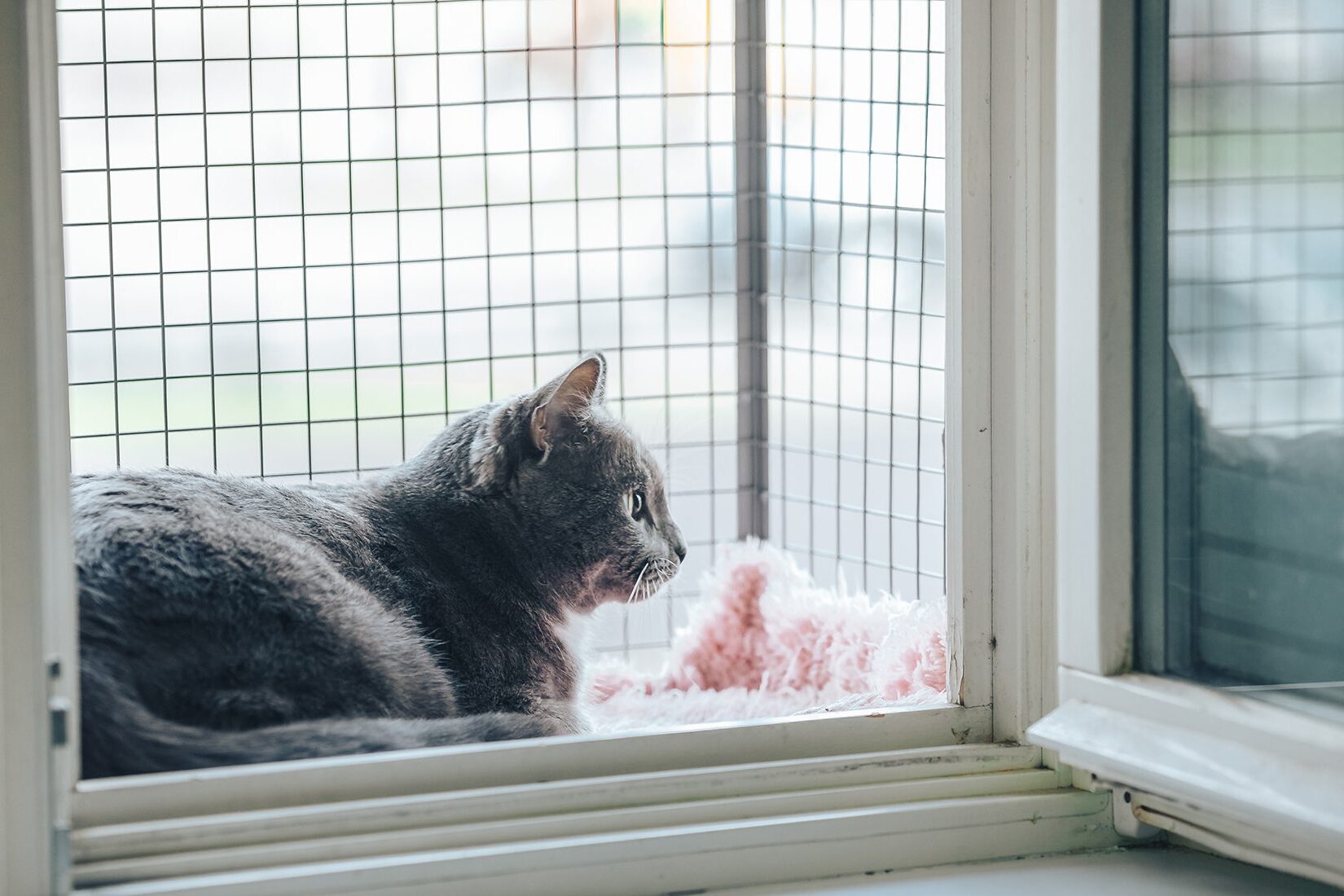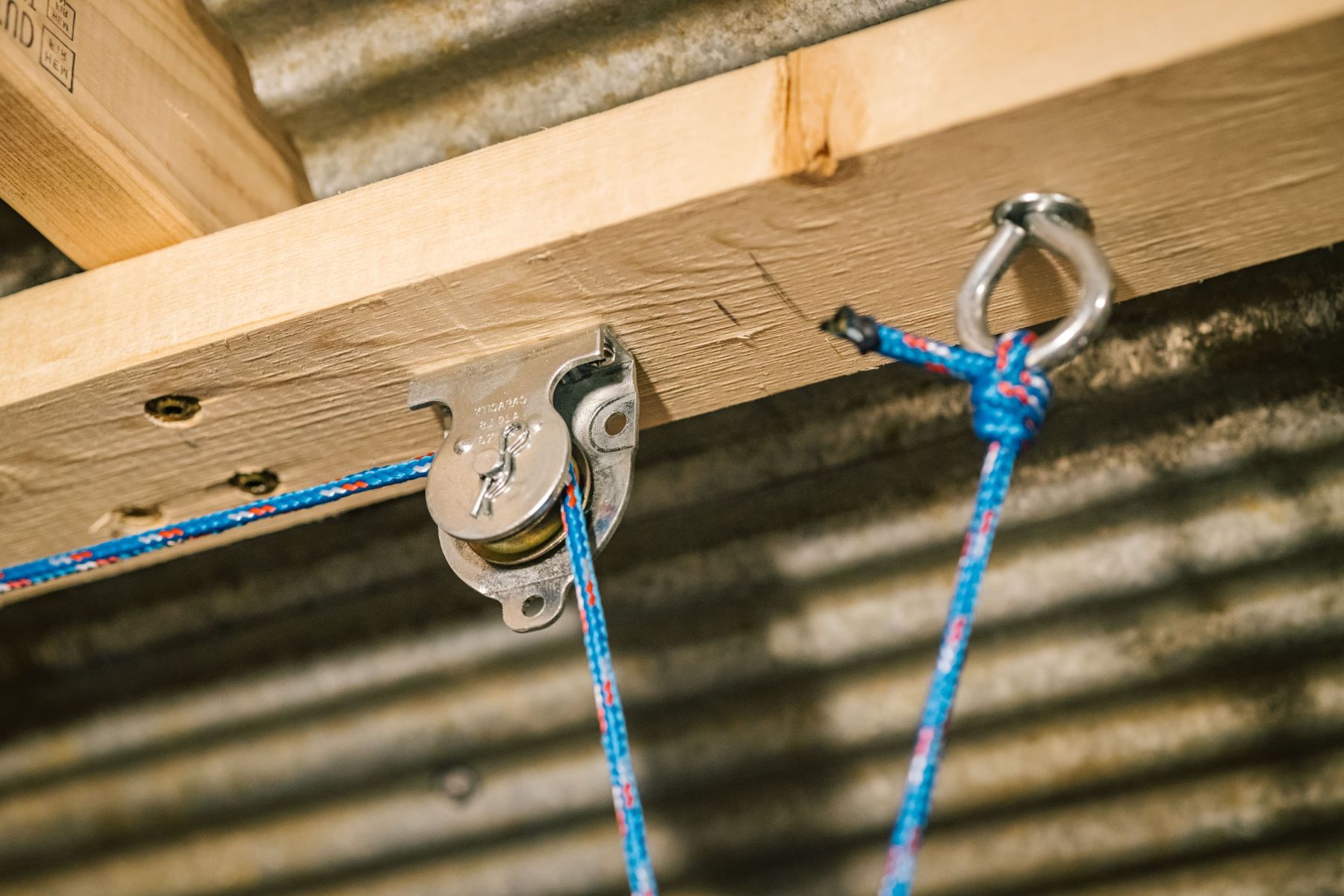Home>Create & Decorate>DIY & Crafts>How To Build Chicken Nesting Boxes
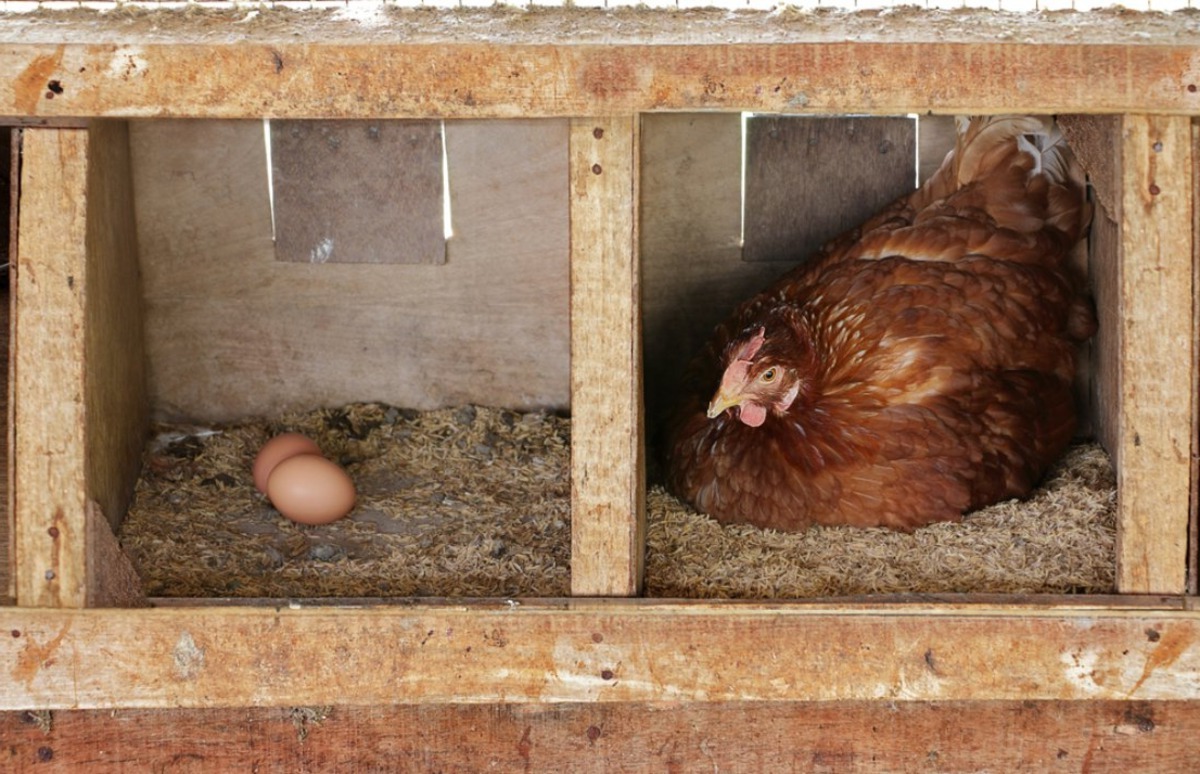

DIY & Crafts
How To Build Chicken Nesting Boxes
Published: February 22, 2024

Content Creator specializing in woodworking and interior transformations. Caegan's guides motivate readers to undertake their own projects, while his custom furniture adds a personal touch.
Learn how to build DIY chicken nesting boxes with our step-by-step guide. Create a cozy and functional space for your hens with these easy crafts.
(Many of the links in this article redirect to a specific reviewed product. Your purchase of these products through affiliate links helps to generate commission for Twigandthistle.com, at no extra cost. Learn more)
Introduction
Building chicken nesting boxes is an essential aspect of creating a comfortable and productive environment for your feathered friends. Nesting boxes provide a designated space for hens to lay their eggs, ensuring that the eggs are kept clean and undamaged. By constructing nesting boxes, you can encourage your chickens to lay eggs in a specific area, making egg collection easier and more efficient.
Additionally, providing suitable nesting boxes can contribute to the overall well-being of your chickens. When hens have access to secure and cozy nesting spaces, they are less likely to lay eggs in undesirable locations, such as the coop floor or outdoor areas. This helps to maintain the cleanliness of the eggs and reduces the risk of breakage.
Moreover, building nesting boxes can be a rewarding DIY project that allows you to customize the boxes according to the specific needs of your flock. Whether you have a small backyard coop or a larger chicken run, creating nesting boxes tailored to your space and the number of chickens you have can greatly enhance the functionality and aesthetics of your poultry setup.
In this comprehensive guide, we will walk you through the process of building chicken nesting boxes step by step. From gathering the necessary materials to installing the completed boxes in your coop, you will gain valuable insights and practical tips to ensure the success of this project. By following these instructions, you can create a welcoming and efficient egg-laying environment for your chickens while indulging in a fulfilling DIY endeavor.
Materials Needed
To embark on the fulfilling journey of building chicken nesting boxes, you will need a selection of materials and tools to bring your vision to life. Here's a comprehensive list of the essential items required for this DIY project:
-
Wood: Select sturdy and untreated lumber for constructing the nesting boxes. Plywood or pine boards are popular choices due to their durability and ease of manipulation.
-
Measuring Tape: A reliable measuring tape is indispensable for accurately determining the dimensions of the nesting boxes and ensuring precise cuts.
-
Saw: Whether you opt for a circular saw, handsaw, or jigsaw, a cutting tool is essential for shaping the wood to the desired sizes.
-
Screws or Nails: Depending on your preference, choose appropriate fasteners to securely assemble the wooden components of the nesting boxes.
-
Drill: A power drill equipped with the necessary drill bits will facilitate the attachment of the wooden panels and ensure a robust construction.
-
Nesting Material: Consider the type of nesting material you intend to use, such as straw, wood shavings, or nesting pads, and ensure you have an ample supply on hand.
-
Hinges (Optional): If you plan to incorporate hinged lids for easy access to the eggs, hinges will be essential for this feature.
-
Paint or Stain (Optional): If you wish to add a decorative touch to the nesting boxes or protect the wood from the elements, paint or wood stain can be included in your materials list.
-
Screwdriver: A screwdriver will be necessary for manually driving screws into the wood if you opt for this method of fastening.
-
Safety Gear: Prioritize safety by wearing protective gear, including goggles and gloves, to safeguard yourself during the construction process.
By ensuring that you have these materials and tools at your disposal, you can proceed with confidence, knowing that you are well-equipped to craft sturdy and functional nesting boxes for your cherished flock. With these essentials in hand, you are ready to move on to the next step of this enriching DIY endeavor.
Step 1: Measure and Cut Wood
The initial step in building chicken nesting boxes involves precise measurements and skillful wood cutting to create the foundational components of the boxes. Accurate measurements are crucial to ensure that the nesting boxes are appropriately sized to accommodate your chickens comfortably. Here's a detailed breakdown of the process:
1.1 Gather the Necessary Wood
Begin by gathering the selected lumber for the nesting boxes. Opt for untreated wood, such as plywood or pine boards, known for their durability and suitability for DIY projects. Ensure that the wood is free from defects and choose pieces that are straight and sturdy to guarantee the structural integrity of the nesting boxes.
1.2 Determine the Dimensions
Using a measuring tape, carefully measure and mark the dimensions for the nesting box panels. The typical size for a nesting box is around 12x12x12 inches, but you can adjust the dimensions based on the size of your chicken breed and the available space in your coop. It's essential to maintain consistency in the measurements to ensure uniformity across the nesting boxes.
1.3 Make Precise Cuts
With the dimensions clearly marked, proceed to cut the wood according to the measured specifications. Employ a saw, such as a circular saw or jigsaw, to execute clean and precise cuts. Exercise caution and steady control while cutting the wood to achieve smooth edges and accurate dimensions for the nesting box panels.
1.4 Create Multiple Panels
Depending on the design of your nesting boxes, you may need to create multiple panels for each box, including front, back, side, and bottom panels. Ensure that each panel is cut to the exact measurements to facilitate seamless assembly during the next phase of the construction process.
1.5 Sand the Edges
After cutting the wood panels, use sandpaper to smooth the edges and remove any rough surfaces. This step not only enhances the visual appeal of the nesting boxes but also minimizes the risk of splinters, ensuring the safety and comfort of your chickens as they access the nesting areas.
By meticulously following these steps, you can effectively measure and cut the wood to lay the groundwork for assembling the chicken nesting boxes. With precision and attention to detail, you are one step closer to creating functional and inviting nesting spaces for your feathered companions.
Step 2: Assemble the Box
With the wooden panels meticulously measured and cut, the next pivotal phase in the construction of chicken nesting boxes is the assembly process. This step involves joining the individual components to form a sturdy and functional nesting box structure. Here's a comprehensive guide to effectively assembling the nesting boxes:
Read more: How to Build Cedar Window Boxes
2.1 Arrange the Panels
Begin by arranging the cut wooden panels in the designated assembly area, ensuring that all the necessary components are readily accessible. Lay out the front, back, side, and bottom panels according to the predetermined design of the nesting boxes. This preparatory step sets the stage for a seamless and organized assembly process.
2.2 Position and Align the Panels
Carefully position the panels in the intended configuration, aligning the edges to facilitate a snug and secure fit. Pay close attention to the orientation of each panel, ensuring that they are correctly positioned to correspond with the predetermined layout of the nesting box. This meticulous alignment is crucial for the structural integrity and functionality of the assembled box.
2.3 Secure the Panels
Once the panels are properly aligned, proceed to fasten them together using the selected fasteners, such as screws or nails. Utilize a power drill or a hammer, depending on the chosen fastening method, to securely attach the panels and create a robust framework for the nesting box. Exercise precision and care to avoid splitting the wood while fastening the panels.
2.4 Reinforce the Joints
To enhance the durability and stability of the assembled nesting box, consider reinforcing the joints with additional support. This can be achieved by adding corner braces or strategically positioned screws to fortify the connections between the panels. By reinforcing the joints, you can ensure that the nesting box withstands the rigors of daily use and provides a secure space for your chickens.
Read more: How to Build an Indoor Window Planter Box
2.5 Optional Features
If you plan to incorporate optional features, such as hinged lids for easy access to the eggs or removable dividers for versatile nesting configurations, this is the opportune stage to integrate these elements into the assembly. Ensure that these features are seamlessly integrated into the overall structure, enhancing the functionality and convenience of the nesting boxes.
By meticulously following these steps, you can adeptly assemble the wooden panels to construct robust and well-crafted chicken nesting boxes. With precision and attention to detail, you are poised to create inviting and secure nesting spaces that cater to the comfort and productivity of your cherished flock.
Step 3: Add Nesting Material
Once the nesting boxes are assembled, the next crucial step is to add nesting material to create a comfortable and inviting environment for your hens. The choice of nesting material plays a significant role in ensuring that the nesting boxes provide a cozy and hygienic space for egg-laying. Here's a detailed guide on adding nesting material to the newly constructed chicken nesting boxes:
3.1 Selecting Suitable Nesting Material
Begin by selecting appropriate nesting material that meets the specific needs of your chickens and contributes to a clean and comfortable nesting environment. Common options for nesting material include straw, wood shavings, shredded paper, or specialized nesting pads. Consider the absorbency, insulation properties, and availability of the material to make an informed choice that aligns with the well-being of your flock.
3.2 Layering the Nesting Material
Carefully layer the chosen nesting material at the bottom of each nesting box, ensuring an even and generous distribution to create a soft and welcoming surface for egg-laying. The depth of the nesting material should be sufficient to cushion the eggs and provide a cozy space for the hens to settle comfortably while laying their eggs. Aim for a layer that is thick enough to offer insulation and support, yet not too dense to impede the natural nesting behavior of the chickens.
Read more: How To Build A Chicken Run
3.3 Monitoring and Refreshing the Material
Regularly monitor the condition of the nesting material to ensure cleanliness and freshness within the nesting boxes. Over time, the nesting material may become soiled or compacted due to frequent use by the hens. When necessary, promptly remove any soiled or deteriorated nesting material and replenish the boxes with a fresh layer to maintain a hygienic and inviting nesting space for your chickens.
3.4 Providing Additional Comfort Elements
Consider enhancing the nesting boxes with additional comfort elements, such as dried herbs or aromatic plants, to create a soothing and calming atmosphere for the hens. Certain herbs, such as lavender or mint, can impart a pleasant fragrance and potentially deter pests, contributing to a serene and inviting nesting environment for your feathered companions.
By meticulously following these steps, you can effectively add nesting material to the newly constructed chicken nesting boxes, ensuring that your hens have access to a cozy and hygienic space for laying their eggs. With thoughtful consideration and attention to detail, you can create an environment that promotes the natural nesting instincts of your chickens while prioritizing their comfort and well-being.
Step 4: Install the Nesting Boxes
With the nesting boxes meticulously crafted and prepared, the final step in this enriching DIY endeavor is the installation of the nesting boxes within your chicken coop or designated poultry area. Proper installation is essential to ensure that the nesting boxes are strategically positioned and readily accessible to your hens, facilitating a seamless egg-laying process. Here's a detailed guide on effectively installing the nesting boxes:
4.1 Selecting the Installation Location
Begin by carefully selecting the optimal location within the chicken coop or run to install the nesting boxes. Consider factors such as accessibility, ventilation, and protection from potential disturbances to determine the most suitable placement for the nesting boxes. Ensure that the chosen location provides a tranquil and secure environment that encourages the natural nesting behavior of your chickens.
Read more: How To Build Raised Planter Boxes
4.2 Mounting the Nesting Boxes
Once the installation location is determined, proceed to securely mount the nesting boxes at an appropriate height to accommodate the comfort and preferences of your hens. Utilize sturdy mounting brackets or hardware to affix the nesting boxes to the coop walls or framework, ensuring that they are firmly anchored and stable. Pay careful attention to the alignment and spacing of the nesting boxes to facilitate ease of access and maintenance.
4.3 Ensuring Adequate Ventilation
Verify that the installed nesting boxes allow for adequate ventilation to prevent the accumulation of excess moisture and maintain a fresh and hygienic nesting environment. Adequate ventilation is essential for regulating the temperature within the nesting boxes and promoting the overall well-being of your chickens. Consider incorporating ventilation openings or spacing the boxes to facilitate air circulation while safeguarding the comfort of the hens.
4.4 Monitoring and Adjustment
After installing the nesting boxes, regularly monitor the usage and condition of the boxes to ensure that they effectively cater to the needs of your hens. Observe the egg-laying patterns and behaviors of the chickens to assess the suitability of the installed nesting boxes. Make any necessary adjustments or refinements to the installation based on the feedback from your flock, ensuring that the nesting boxes provide a conducive and inviting space for egg-laying.
4.5 Promoting a Tranquil Environment
Create a tranquil and inviting atmosphere around the nesting boxes by minimizing disturbances and maintaining a serene ambiance within the chicken coop. Minimize loud noises or sudden movements in the vicinity of the nesting boxes to foster a calm and stress-free environment that encourages the hens to utilize the designated nesting spaces consistently.
By meticulously following these steps, you can adeptly install the nesting boxes within your chicken coop, creating a welcoming and functional egg-laying environment for your cherished flock. With attention to detail and a focus on promoting the natural nesting instincts of your chickens, you can ensure that the installed nesting boxes contribute to the overall well-being and productivity of your feathered companions.
Read more: How To Install Chicken Wire Fence
Conclusion
In conclusion, the process of building and installing chicken nesting boxes is a rewarding and essential endeavor for poultry enthusiasts. By embarking on this DIY project, you have not only created a designated space for your hens to lay their eggs but also contributed to the overall well-being and productivity of your cherished flock.
Throughout this comprehensive guide, you have gained valuable insights into the meticulous process of constructing nesting boxes, from measuring and cutting the wood to assembling the components with precision and care. By following these steps, you have successfully crafted sturdy and functional nesting boxes that cater to the comfort and natural nesting instincts of your chickens.
Furthermore, the thoughtful addition of suitable nesting material has transformed the nesting boxes into inviting and hygienic spaces for egg-laying, ensuring that your hens have a cozy and secure environment to fulfill their natural reproductive behaviors. The careful selection and layering of nesting material have not only provided comfort for the hens but also facilitated the maintenance of a clean and welcoming nesting space.
The installation of the nesting boxes within the chicken coop or run marks the culmination of this enriching DIY endeavor. By strategically positioning the nesting boxes and ensuring adequate ventilation, you have created an environment that promotes the natural egg-laying behaviors of your chickens while prioritizing their comfort and well-being.
As you observe your hens utilizing the newly installed nesting boxes and witness the seamless egg-laying process, you can take pride in the accomplishment of this project. The provision of secure and inviting nesting spaces for your flock not only enhances the functionality of your poultry setup but also fosters a deeper connection with your feathered companions.
Ultimately, the construction and installation of chicken nesting boxes exemplify the dedication and care you invest in creating a nurturing and harmonious environment for your chickens. By prioritizing their natural behaviors and comfort, you have established a foundation for a thriving and contented flock, enriching your experience as a poultry enthusiast.
With the completion of this project, you are poised to enjoy the bountiful and wholesome rewards of tending to a flock of happy and productive hens, knowing that you have played a pivotal role in fostering their well-being and contributing to the joy of fresh, homegrown eggs.

